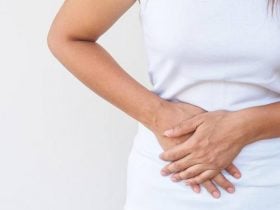Dietary Changes

There is no specific diet for treating symptoms of gallstones. Most people who experience symptoms of Gallstones will undergo a surgery to have their bladder removed by an operation called cholecystectomy. However, dietary change can help with the symptom of callstones. Eating a low-fat diet [2] is likely to reduce symptoms while you are waiting for the operation, as the gallbladder will not be stimulated to release bile into the small intestine. If you find that any particular foods trigger the onset of the pain, then try to avoid eating those foods until you have had your gallbladder removed.
After the operation, there would be no need for you to follow any particular diet. However, it is still very much important that you stay eating as healthy as possible.
If you are overweight, losing weight will be beneficial. However, it is important to do this gradually, as rapid weight loss has been associated with the development of gallstones. A safe weight loss of 1-2lbs (0.5 to 1 kg) per week is recommended.
A healthy balanced diet [3] recommended for someone recovering from gallstones consists of:
- Plenty of fruits and vegetables, at least five portions a day. [4]
- Plenty of starchy carbohydrates. Examples include bread, rice, cereals, pasta, potatoes, chapattis and plantain. Choose whole grain varieties where possible.
- Some milk and dairy products (2-3 portions per day). Choose low-fat dairy products.
- Some meat, fish, eggs and alternatives such as beans and pulses.
- Limited amounts of foods high in fats and sugars. Limit saturated fat that is found in animal products, such as butter, ghee, cheese, meat, cakes, biscuits and pastries. Replace these with unsaturated fats found in non-animal products, such as sunflower, rapeseed and olive oil, avocados, nuts and seeds. But remember that unsaturated fats can also trigger gallstone pain.
- Make sure your diet is high in fiber. [5] High fiber food includes beans, pulses, fruit, and vegetables.
- Increase intake of fluid at least 2 liters a day.
It is advised that you do not eat too much fat at one meal time. Also, some people find that specific food are the triggers for symptoms. You can keep a food and symptom diary to help identify trigger foods. It would be best that you avoid these foods.













